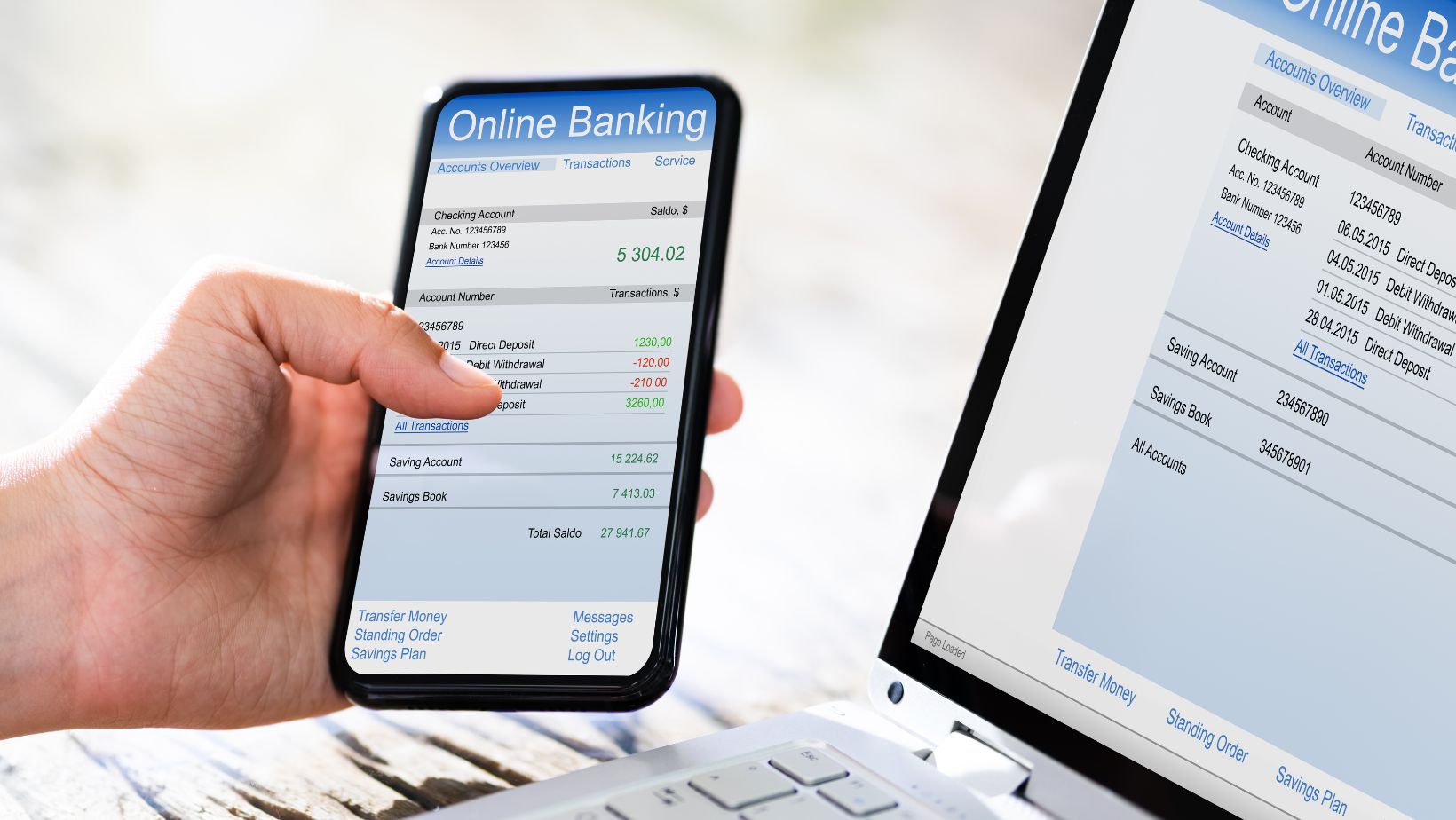
You want a banking app users open daily — without hand-holding, friction, or risk. This guide shows how to get there.
We’ll cover mobile banking app development from goals to go-live. You’ll see which features move KPIs, how to shape the architecture, what to test, and where compliance bites. Short sentences. Clear tables. No fluff.
Why Build A Mobile Banking App Now?
Customers expect to open an account, move money, and get help in minutes. They won’t wait for branch hours. They won’t forgive clunky flows. Done well, Mobile Banking App Development lifts activation, deposits, and card spend.
What Success Looks Like
Tie features to business outcomes before a single screen is drawn.
| Business goal | Feature to ship first | KPI to watch | Leading signal |
| Faster activation | eKYC with document scan + selfie | KYC pass rate | Time to onboard |
| More deposits | Instant top-up, salary switch | Funding rate (D30) | Average balance |
| Higher card usage | Push-to-card provisioning (Apple/Google Pay) | Cards added to wallet | Txn per active card |
| Stickier engagement | Real-time insights + alerts | WAU/MAU ratio | Opt-in to notifications |
| Lower cost to serve | In-app support + smart FAQs | Containment rate | First-contact resolution |
One idea per metric. One owner per metric. One ship date per owner.
Core Features That Move The Needle
Start with money in, money out, and help.
- Onboarding: ID scan, selfie match, sanctions check, address proof.
- Accounts: Balances, statements, alias accounts, joint access.
- Payments: P2P, bill pay, transfers, QR, scheduled and recurring.
- Cards: Virtual + physical, PIN controls, merchant controls, travel mode.
- Fraud & risk: Step-up auth, device checks, velocity rules.
- Support: Chat, disputes, card freeze, secure inbox.
Each feature earns its slot by tying to a KPI above.
Architecture for Mobile Banking App Development
Your stack should be boring, observable, and safe.
| Layer | Primary choices | Why it matters |
| Client apps | Swift/Kotlin, React Native where fit | Deep OS security and wallet hooks require native paths for sensitive flows |
| Security edge | Device binding, certificate pinning, attestation | Stops MITM and cloned devices before login |
| API | REST/GraphQL with strict scopes | Simple, versioned contracts speed teams |
| Services | “Thin” domain services, idempotent ops | Payments are stateful; retries must be safe |
| Integrations | Core banking, card processor, KYC, fraud, push | Keep them isolated behind adapters |
| Data | Event log + OLTP + analytics lake | You can’t fix what you don’t track |
| Observability | Tracing, metrics, structured logs | Triage outages in minutes, not hours |
Security You Can Audit
Mobile banking is a target.

Treat security as product work, not a checklist.
- Baseline: Align to the OWASP Mobile Application Security Verification Standard (MASVS). It lays out testable requirements for storage, crypto, network, and tamper checks. Use it as your sprint-review rubric.
- Authentication: Follow NIST SP 800-63B for authenticator assurance. Support phishing-resistant MFA where possible and block weak factors by policy.
- Data at rest: Use the OS keystore. Salt and hash sensitive identifiers. Never log secrets.
- Data in transit: Enforce TLS 1.2+ and pin public keys in high-risk paths.
- Device signals: Detect root/jailbreak, emulator, debugger, and untrusted keyboards.
- Secrets: Remove API keys from clients. Rotate everything on a schedule.
- Fraud: Add step-up auth on risk spikes. Rate-limit sensitive actions.
- Reviews: Threat-model per epic. Pen-test before launch. Re-test at each major release.
Compliance, Without Slowing Delivery
Regulations differ by market, but the patterns rhyme.
- EU/UK: PSD2 requires Strong Customer Authentication (SCA) for many online payments. Support 2-factor methods, exemptions, and step-up flows. Your app should prompt 3-D Secure only when needed, not on every tap.
- Identity: Keep audit trails for KYC decisions. Store consent timestamps.
- Privacy: Minimize data, set explicit retention, and document processors.
- Cards: If you process PANs, meet PCI DSS. Avoid that on mobile; tokenize instead.
Quick Checklist
| Area | Must-have | Good-to-have |
| SCA | Step-up MFA and exemptions | Silent risk scoring before prompts |
| KYC | Sanctions, PEP, doc + liveness | Re-verification on risk events |
| Privacy | Purpose-bound storage, DSR flows | Regional data residency |
| Audit | Immutable event stream | Field-level lineage |
Product Decisions That Save Months
Pick your integrations like a portfolio manager.
| Decision | Options | Trade-offs |
| Core banking | Vendor core vs. ledger microservice | Vendor is faster; custom gives control |
| Payments | Direct schemes vs. aggregator | Direct lowers unit cost; aggregator adds reach |
| Cards | Processor SDK vs. pure API | SDK speeds wallet/PIN; API is flexible |
| Identity | All-in-one KYC vs. mix-and-match | One contract vs. best tool per market |
| Messaging | Native push vs. customer-engagement platform | Build vs. analytics and targeting |
Document why you chose each. Revisit when volume or markets change.
Delivery Plan And Timeline
Ship value every sprint. De-risk early.
| Phase | Duration | What ships | Exit criteria |
| Discovery | 2–3 weeks | KPIs, target journeys, risk map | Signed scope and KPI owners |
| Foundation | 3–5 weeks | Design system, auth, secure API, CI/CD | MASVS baseline, observability live |
| MVP | 6–10 weeks | Onboarding, accounts, transfers, card controls | Pilot users complete journeys |
| Scale | 6–12 weeks | Wallets, insights, support, analytics | KPI lift vs. baseline |
| Expansion | Ongoing | New markets, methods, offers | CAC/LTV targets met |
Durations are guides. Your scope, vendors, and approvals will set the pace.
Testing That Catches What Users Feel
- Unit + contract tests: Lock API shapes.
- Device matrix: Test on the top 10 real devices per market.
- Chaos and network: Add packet loss and latency in CI.
- Security tests: Static, dynamic, and jailbreak scenarios.
- User tests: Five users, two tasks, one hour. Fix what blocks.
- Beta: Dogfood internally. Roll out by cohort. Watch crash-free sessions and step drop-offs.
Analytics And Growth Loops
Instrument every step users care about.
- Track onboarding starts, KYC passes, funding, first payment, repeat payment, card-in-wallet, and support events.
- Build a journey table that links sessions to outcomes.
- Send helpful alerts: salary in, large spend, failed payment, low balance.
- Run A/B tests on the first fund flow, not the home screen layout.
- Use event data to trigger “next best action” nudges.
Performance And Reliability
A banking app feels fast at 200 ms and painful at 800 ms.
- Cache non-sensitive data on device.
- Batch network calls.
- Use idempotency keys for all payment operations.
- Time-box third-party calls and fail safe.
- Give the user clear states: pending, posted, failed, reversed.
Accessibility And Trust
Every customer should succeed on their first try.
- Respect large text and high-contrast settings.
- Support screen readers with proper labels.
- Keep motion subtle and optional.
- Explain risk in plain language: “We paused this payment to keep your money safe.”
What To Budget For (Without Fake Numbers)
You can’t price Mobile Banking App Development with a single tag. Instead, plan around the drivers.
| Driver | What changes the number | How to control it |
| Scope | Markets, methods, card features | Freeze MVP, stage the rest |
| Integrations | Core, processor, KYC, fraud | Pick vendors early, mock the rest |
| Security | MASVS level, pen-tests, audits | Bake into sprints, not after |
| Talent | Native vs. cross-platform skill mix | Staff for critical paths |
| Compliance | SCA, privacy, reporting | Reuse proven patterns |
| Non-functional | Uptime, monitoring, DR | Automate runbooks and drills |
Ask vendors for a fixed-scope MVP price with change-order rules. Tie payments to milestones, not hours.
Vendor Due-Diligence Questions
- Which MASVS controls do you test each sprint? Show evidence.
- What AAL level do your auth flows meet per NIST SP 800-63B?
- How will you meet PSD2 SCA while keeping conversion high? Show your exemption logic.
- What devices and OS versions do you certify?
- How do you detect rooted or jailbroken devices?
- Which third-party SDKs run in-app, and why?
- How do you roll back a bad release in one hour?
- What is your incident on-call model and SLA?
- How do you pin APIs and rotate keys?
- What metrics will you own after launch?
Common Pitfalls (And Fast Fixes)
- Shipping fancy dashboards before fixing the first-funding flow.
- Doing “security at the end.”
- Treating compliance text as copy, not logic.
- Mixing analytics IDs with PII in logs.
- Letting staging drift from production.
- Hiding errors from users instead of guiding next steps.
Fix them with a hard gate for funding, MASVS checklists, regulated flows as state machines, privacy review of events, infra as code, and clear error UX.
Your Next Step
Frame the KPIs. Pick the first three features. Set the security bar. Then start Mobile Banking App Development with a plan that can survive scale.
Authoritative resources worth bookmarking:
- OWASP MASVS — practical, testable security requirements for mobile apps.
- NIST SP 800-63B — modern guidance on authentication strength and MFA.
- EU PSD2 / SCA — official overview of strong customer authentication.
If you want help turning this into a delivery plan, say what market you’re targeting and what you must ship first. I’ll map it to a concrete backlog and timeline.


